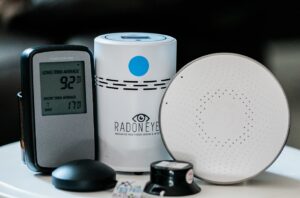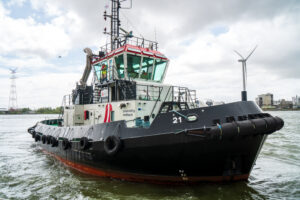Scotland sets out stricter limits in Clean Air Strategy
Included are World Health Organisation air quality limits and plans for a Low Emission Zone framework
A Clean Air Strategy for Scotland setting out plans for a national low emission zone framework, public awareness campaign and more stringent air pollution limits has been published by the Scottish Government.
There is no equivalent air quality strategy in place specifically for England, Wales or Northern Ireland — although Scotland’s strategy emerges as Defra’s consultation on its UK-wide air quality plan closes today (November 6).
The Scottish strategy builds on an earlier draft of the document published earlier this year for consultation which was previously called the Low Emission Strategy (see AirQualityNews.com story), but has now been renamed the Clean Air Strategy as it was felt this would resonate better with the public.
Encompassing sections on transport, legislation and policy, communication, health, placemaking and climate change, the wide-ranging 94-page document sets out targets for Scotland to be compliant with all EU air quality limits by 2020.
Furthermore, according to the strategy, Scotland will become the first European country to implement statutory limits for particulate matter PM2.5 as well as more stringent limits for PM10 based on World Health Organisation (WHO) guidelines.
And, as with the previous draft document, the finalised wide-ranging Clean Air Strategy also sets out several major initiatives as well as the devolved authority’s plans to develop its own consistent air quality monitoring methodology and network to keep track of pollution levels across Scotland.
A governance group is being established to oversee the implementation of the strategy, while an annual progress report will be published.
Strategy launch
The publication of the strategy — ‘Cleaner Air for Scotland — the Road to a Healthier Future’ — was announced this week (November 4) by Scotland’s Minister for the Environment and Climate Change Aileen McLeod at the Scottish Transport Emissions Partnership (STEP)’s annual conference in Edinburgh.
Dr McLeod said: “Cleaner Air for Scotland is our first distinct air quality strategy. It sets out actions across government portfolios that will further reduce air pollution, with a particular emphasis on protecting human health and reducing health inequalities.
“Through Cleaner Air for Scotland we will adopt the World Health Organisation guideline values for particulate matter in Scottish legislation — making us the first country in Europe to do so. I want us to demonstrate our level of ambition, but at the same time learn from good practice elsewhere.
“We must also highlight the opportunities to generate efficiencies and cost savings by linking air quality to other areas, such as climate change adaption and mitigation, transport and planning.”
She also said the Scottish Government would develop a national air quality awareness campaign to encourage behaviour change as “public participation and engagement is essential if we are to deliver change”.
WHO PM guidelines
While WHO air quality guidelines for nitrogen dioxide (NO2) tally with both EU and UK national annual mean limits of 40ugm3 (microgrammes per cubic metre), WHO’s guidelines for particulate matter PM10 and PM2.5 are more stringent than EU or UK limits.
WHO guidelines suggest PM10 should be limited to an annual average of 20ugm3 and PM2.5 to an annual average of just 10ugm3. Currently, the UK limits PM10 to 40ugm3 on average each year, while there are no statutory limits at all for PM2.5.
Scotland itself has its own objectives of 18ugm3 for PM10 and 12ugm3 for PM2.5 which are more stringent than those in the rest of the UK, but the new strategy would see these limits reduced even further to WHO guidelines.
Criticism
Air quality campaigners welcomed the inclusion of WHO guidelines for PM2.5 in Scottish statutory air quality limits and the Scottish Government’s commitment to meeting EU limits by 2020.
However, Friends of the Earth Scotland criticised the strategy for its admission that Scotland’s air would not meet limits until 2020, and that the strategy requires funding to be deliverable.
Air pollution campaigner for the organisation, Emilia Hanna, said: “Scotland is going to set tougher targets to protect health but doesn’t have a plan which will deliver them any time soon. In particular, there are not enough measures in the Strategy to get the most polluting traffic off our roads.”
She also pointed out that there are currently only six monitoring stations across Scotland for PM2.5, and that many more would be needed to monitor the pollutant if statutory WHO limits are to be introduced, therefore requiring further investment.
- In other Scotland news, the Scottish Environment Protection Agency (SEPA) is hosting a public workshop next week to help develop a new online air quality tool for local communities. The event takes place at the Stirling Court Hotel within the Stirling Unversity Campus on November 10 2015.

















Create fresh air? I know some wood burners say that their smoke is a breath of fresh air … instead of using a clean fossil fuel like gas! Yet burning wood creates more CO2 per unit of heat than gas, and hundreds of times more particulate! Go figure?